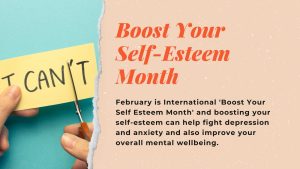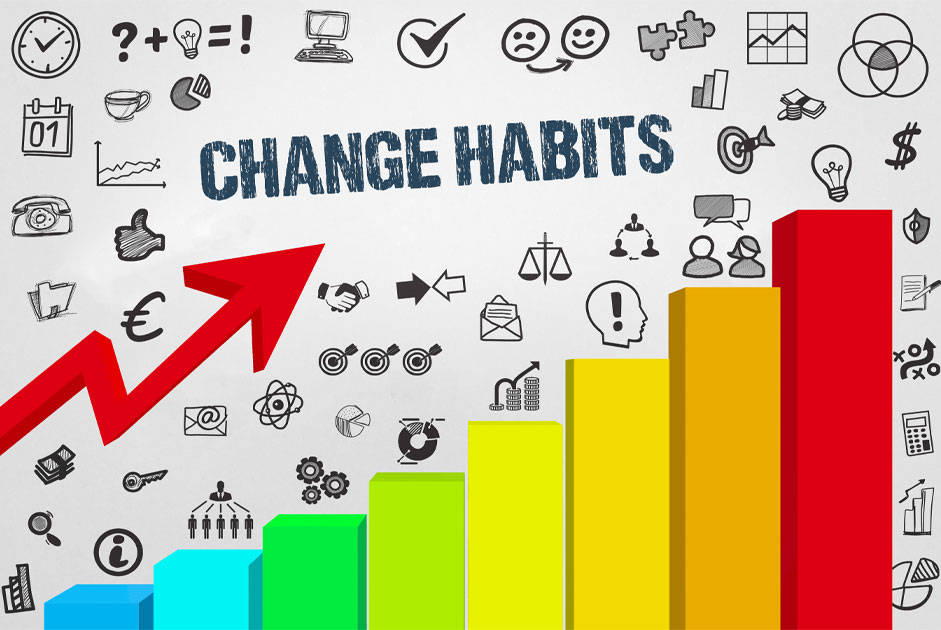Self-esteem, simply put, is how one feel about themselves. And while self-esteem begins to develop in early childhood, it is not set in stone. In fact, self-esteem is ever-changing throughout your life. There may be times when one’s self-esteem is at an all time high, and others when it has taken an undesirable dip, perhaps due to a stressful life event or mental health struggle, like clinical depression. Everyone has the power to develop their self-esteem independent of help from others, and the benefits are significant.
Self-esteem is the degree to which one feels confident, valuable, and worthy of respect. It exists on a continuum from high to low. Having a healthy self-esteem is not simply about liking yourself more. It is also a way of improving your mental health. Where a person’s self-esteem falls on this spectrum can influence one’s overall well-being.
People with high self-esteem often feel good about themselves and their progress through life. However, people with low self-esteem often feel shame and self-doubt. They often spend lots of time criticizing themselves. Low self-esteem is a symptom of several mental health conditions, such as anxiety and depression.
Low self-esteem is not represented as its own diagnosis in the APA’s Diagnostic and Statistical Manual (DSM-V). Yet its symptoms and effects are very real. People who wish to improve their self-esteem can begin a self-help wellness plan through the NMConnect app, engage with a peer support on the Warmline, and begin counseling with a behavioral health therapist.
Understand how low self-esteem develops. Some people develop low self-esteem in childhood. When adults harshly criticize children for mistakes, kids may internalize those messages. Adverse childhood experiences, such as child abuse or bullying, can also contribute to low self-esteem. While in adulthood, any demoralizing life experience can reduce self-esteem. Loss of employment, breakups, and other life changes can cause fear or self-doubt. These feelings can affect one’s self-worth, confidence, and resilience. Once these factors are compromised, a person may be more prone to developing negative beliefs and self-talk patterns.
Recognize low self-esteem. Self-esteem draws on beliefs about oneself. Thus, people with low self-esteem usually have a low opinion of themselves. They may compare themselves to others, then judge themselves inferior. People may cope with low self-esteem in different ways. Low self-esteem often presents in one of three patterns:
- Imposter Syndrome: A person uses accomplishments or false confidence to mask their insecurities. They fear failure will reveal their true, flawed self. The person may use perfectionism or procrastination to deal with this anxiety.
- Rebellion: A person pretends they don’t care what others think of them. Their feelings of inferiority may manifest as anger or blame. They may act out by defying authority or breaking laws.
- Victimhood: A person believes they are helpless in the face of challenges. They may use self-pity to avoid changing their situation. They often rely on others to save or guide them.
Internally, poor self-regard often manifests as self-criticism. Common examples of negative self-talk include:
- There’s nothing I truly like about myself.
- I’ll never do well enough at school or work to succeed.
- I’m not worthy of seeking things that interest me.
- Other people are more deserving of happiness.
- No one wants to hear about my life or the issues I’m facing.
- It’s all my fault I can’t seem to find people who are good to me. Good people wouldn’t want to be with me, anyway.
- How one describes themselves – intelligent, stupid, beautiful, ugly, kind, fat, giving, etc…
Over time, negative thoughts can become so frequent the person sees them as fact. When left on a loop, this thought process can be very damaging and people may begin engaging in harmful behaviors such as misusing substances, neglect hygiene, bully, criticize others to compensate for their own insecurities, avoid seeking relationships out of fear of being rejected, and isolate.
Consider how marginalization can be an impact on self-esteem as a result of higher rates of experiencing prejudice and discrimination. This marginalization could be based on one’s religion, health, looks, or many other traits that lend to a higher risk of self-esteem issues.
Factors that may influence self-esteem include:
- Age: Research including 48 countries shows self-esteem tends to increase from adolescence to middle age. An American study found self-esteem peaks at around 60 years old. Among seniors over 60, self-esteem declines sharply as people continue aging. Changes in financial status and physical health may account for the much of this decline.
- Body type: Children who are overweight or obese frequently experience bullying. These youths are more likely to experience low self-esteem both during childhood and later in life. They may also have fewer friends during childhood. Social isolation can also contribute to low self-esteem.
- Gender: Across cultures, women tend to report lower self-esteem than men. This trend seems to be most pronounced in Western cultures.
- Mental health status: A 2012 study examined self-esteem among people with mental health diagnoses. Humor, community involvement, and positive ingroup stereotyping were linked to higher self-esteem. People who kept their conditions secret or put lots of effort into disproving negative stereotypes often had lower self-esteem.
- Race and ethnicity: A 2011 study of high schoolers looked at self-esteem differences between racial and ethnic groups. In the study, Asian-American students had the lowest levels of self-esteem. Hispanic students had slightly higher rates, followed by white students. Black students had the highest self-esteem levels. These data points match the results of prior studies.
- Sexual/gender minority status: Students who are lesbian, gay, bisexual, transgender, or queer (LGBTQ+) are more likely to develop low self-esteem than their peers. Bullying is a large contributor to self-esteem issues in LGBTQ+ kids. For transgender individuals, gender dysphoria can strongly affect self-esteem as well.
- Socioeconomic status: A 2017 study analyzed self-esteem in middle schoolers from low-income families. Students who believed American society was “fair” were more likely to have low self-esteem years later. Most of the students had experienced discrimination and systemic disadvantages over the course of middle school.
It is important to note that not everyone in a marginalized group will have low self-esteem. Some people may assign less value to domains where they face systemic barriers. For instance, a person from a low-income family may not base their self-worth on owning a fancy car. Instead, they may focus on romantic success or physical fitness. While other people may measure their progress only in comparison to members of their own group. They may attribute setbacks to discrimination rather than individual failures. These strategies may offer a counterweight to the effects of marginalization.
Regardless of the factors contributing to one’s low self-esteem, support is available. A mental health professional can help one address the emotions underlying low self-esteem. With time and work, it is possible to develop a healthy relationship with oneself.
In the meantime….
Find ways to stop the negative self-talk. The labels people assign themselves are endless and often, the negatives outweigh the positives. Yet, these labels are not just meaningless words that flow in and out of one’s head. They become ingrained, and begin to shape perceptions, self-esteem, and even contribute to mental health concerns like clinical depression.
Pay attention to self-talk and how critical a person is on themselves. With increased awareness, a person can begin to catch themself when negative thoughts come up, and begin to challenge and change them.
Accept “imperfections”. As human beings, we all have “imperfections”; things we wish we could change or improve upon within ourselves. Yet, to stop these “imperfections” from overpowering our self-esteem, it is important to separate the “imperfections” that can be worked on, from those which are unchangeable.
For those unchangeable “imperfections”, there really are only two choices: a person can mull over it, or they can choose acceptance. With acceptance, a person can begin to move further away from the personal struggle, whether it be clinical depression, or simply low-self-esteem. They might be wondering how they can just accept something they do not like, and it is all about a state of mind. Accepting “imperfections” does not have to mean they like those “imperfections”, it simply means they choose to no longer let something that cannot be changed have control over them. Acceptance allows a person to spend less time and energy focusing on what they do not like, which gives them space to discover their strengths.
Celebrate strengths. Celebrating strengths is a simple activity to incorporate into daily life. And it only has to take up 5 minutes of a person’s time. Take a moment once per day to reflect on personal strengths. These can be things one likes about themselves physically, but also includes traits of one’s personality, abilities, relationships, etc. Some examples include:
- “I make my friends laugh.”
- “I show love for my significant other.”
- “I am a good caretaker to my animals.”
Once a person begins acknowledge their strengths, write them down, and do something to celebrate them! Pick one and identify how it contributes to making life better. Or, distinguish how the strengths have added to the accomplishments (no matter how small). If a person finds they are having trouble with this at first, encourage them to talk with friends, family, or the New Mexico Crisis and Access Line about strengths, successes, and opportunities. Hearing feedback from others can be helpful.
Practice self-care. Taking better care of yourself is one of the quickest ways to provide an instant self-esteem boost, but also one of the easiest things to ignore when you are not feeling up to the task. Practicing self-care takes effort and we can all find reasons not to do it. Maybe daily life, stress, or clinical depression has gotten in the way. And while it may take a bit of planning, practicing self-care is a must for positive self-esteem.
Self-care means focusing on yourself and your needs, through things like getting sufficient sleep, nourishing your body appropriately, engaging in daily hygiene, and participating in activities that promote a sense of peace and well-being. Examine your current self-care practices, and identify where you may be lacking. By boosting your self-care routine you will feel better about yourself, and things like clinical depression will be easier to manage.
Participate in self-guided mental health wellness activities which offer you a great way find your pathway to wellness and improved self-esteem. Check out how the NMConnect integrated self-help wellness tools can assist you in taking control of your mental health, and support you in your path to wellness. The NMConnect app integrated self-help wellness tools are free to all New Mexicans. Download the app today through the Apple iOS store or the Google Play Store, then create your free wellness account.
Achieving a healthy self-esteem is a process. Yet, with using some of the approaches mentioned above, you may find that life looks a bit brighter. Boosting your self-esteem may not cure your clinical depression, anxiety, or other struggle, but it can create a sense of resilience during difficult and stressful times. Obviously the benefits are abundant, but you must be willing to put in the effort.
And remember if you or someone you know is struggling with finding ways to manage clinical depression or boost self-esteem, and need to talk to a mental health professional, reach out to New Mexico 988, the New Mexico Crisis and Access Line (855-662-7474), or the Peer-to-Peer Warmline (855-466-7100) to talk when you need someone here to hear you, offer support, and connect you to community resources for additional support.











